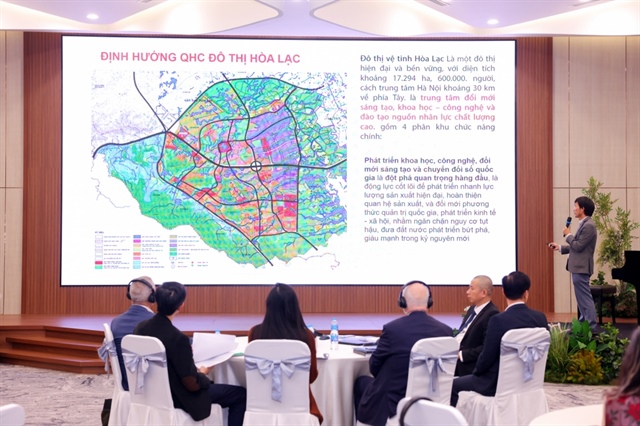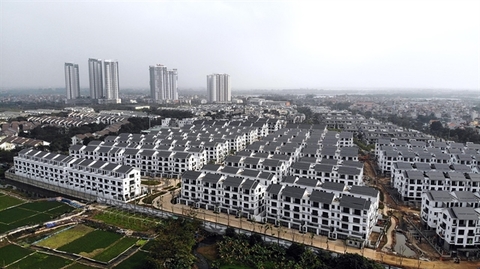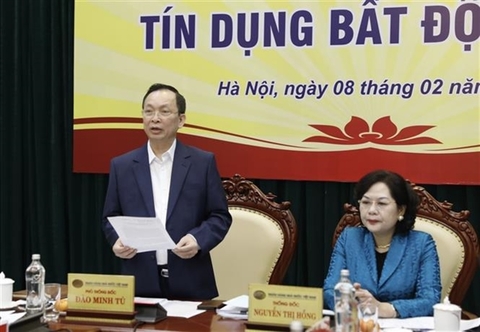VARS hopes constraints on real estate will be lifted
VARS hopes constraints on real estate will be lifted
Nguyen Van Dinh, chairman of the Vietnam Association of Realtors (VARS), hoped that processes and norms will be revamped to help the real estate market revive.
Recently, the government and central agencies have convened a number of urgent meetings to promote the slogan saying that "the government accompanies enterprises." How would you describe this initiative?
Along with market participants and industry experts, I am ecstatic that the government and its ministries, agencies, and sectors are addressing the problems facing businesses currently, particularly those affecting the real estate industry. This is really significant, particularly at a time when firms are confronted with so many challenges.
The market is often lively after the Lunar New Year, but it is rather dull at the moment.
This has an impact on not just the real estate industry but also the overall economy, since the real estate market is interconnected with at least 40 economic sectors. The market has slowed as a result of being stranded between legal and financial issues, which have had a large effect on market confidence.
According to a report by the VARS, in Hanoi and Ho Chi Minh City, the two markets with the greatest genuine demand in the nation, there are almost no apartments available for less than $1,060 per square metre.
The market absorption rate last year was only around 39 per cent, or 19,000 successful transactions, which was comparable to 69 per cent of the consumption volume in 2021 and just 17 per cent of the transaction volume of 2018. During the fourth quarter of 2022, the rate of absorption was just 14 per cent.
Meanwhile, numerous agencies and organisations have reported that Vietnam's economy is rebounding vigorously, that it is the region's and the world's bright spot, that its credit rating has been upgraded, and that it is actively seeking investment and tourism. This necessitates a more comprehensive analysis of the current status of the Vietnamese real estate market, as well as strategies for restoring the market to its original position and resuming growth and development.
The completion of modifications to the 2013 Land Law and a number of associated regulations is crucial for the growth of the industry. However, this procedure could take a while. What is the most urgent problem to be resolved?
Recent communications indicate that, in the near future, the management agency will prioritise facilitating access to financing for enterprises, particularly real estate companies.
Consequently, it will concentrate on two issues; regulations concerning the issuing and trading of corporate bonds on the domestic and foreign markets; and easing credit restrictions in the real estate market.
Capital from bonds or credit is now estimated to be "out of phase" relative to the original objective. However, I believe that we need to "modify the phase," not "close the phase," to calm market sentiment, and a clearer message is therefore required.
Specifically, the market's money supply was "out of phase" in some product divisions, leaning too heavily towards people with no true need, resulting in speculation and spiking house prices for an extended period of time.
Nonetheless, when the regulator tightened the management of bonds and credit, the market was jolted and plunged into a near year-long lull. This highlights the need to learn from the past and take a more rational approach to the market.
For the credit market, it is difficult to forecast a reduction in interest rates at this time because it is tied to monetary policy, but there is still a need to disburse funds and even give moderate priority to the segment serving mass demand, particularly affordable housing and social housing projects.
What response would the VARS like to convey as an organisation representing many market players?
We expect the government and regulatory bodies to provide clients, investors, real estate developers, and secondary investors with research and detailed instructions for the use of credit. One of the current ideas is for significant investors and projects that have been evaluated and authorised to have more access to finance, thereby encouraging the real estate market to gradually heat up.
In addition, the process of resolving obstacles in projects plays a significant role in local socioeconomic development, such as affordable and social housing. Or, financial assistance for project investors must be expedited by reducing obstacles.
The real estate market cannot be eliminated at the present pace of economic development, but it must make a return in a new, stronger, and more sustainable position. For long-term growth, the contemporary real estate market may not need to be as soaring as it was in the past, but it must be steady.
























